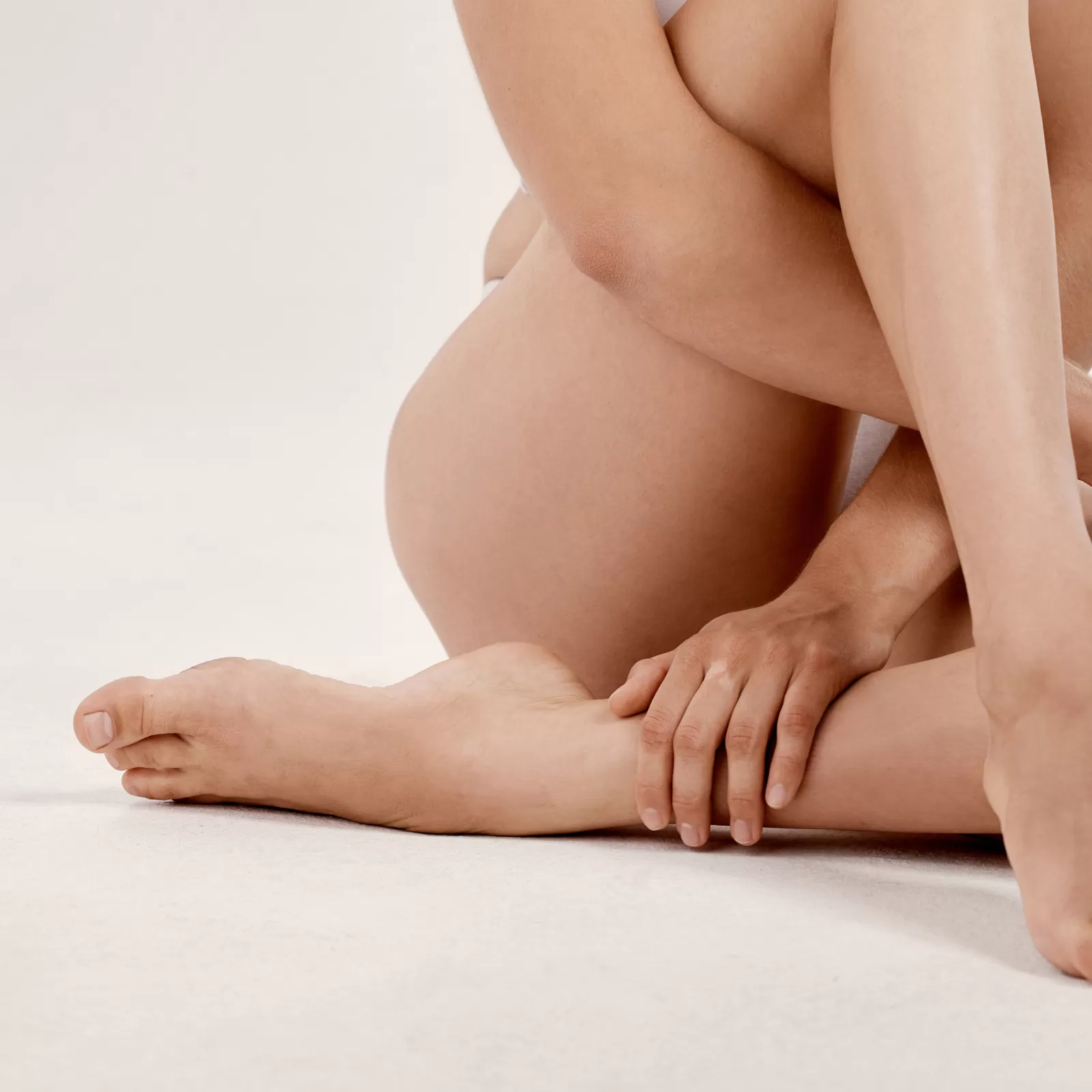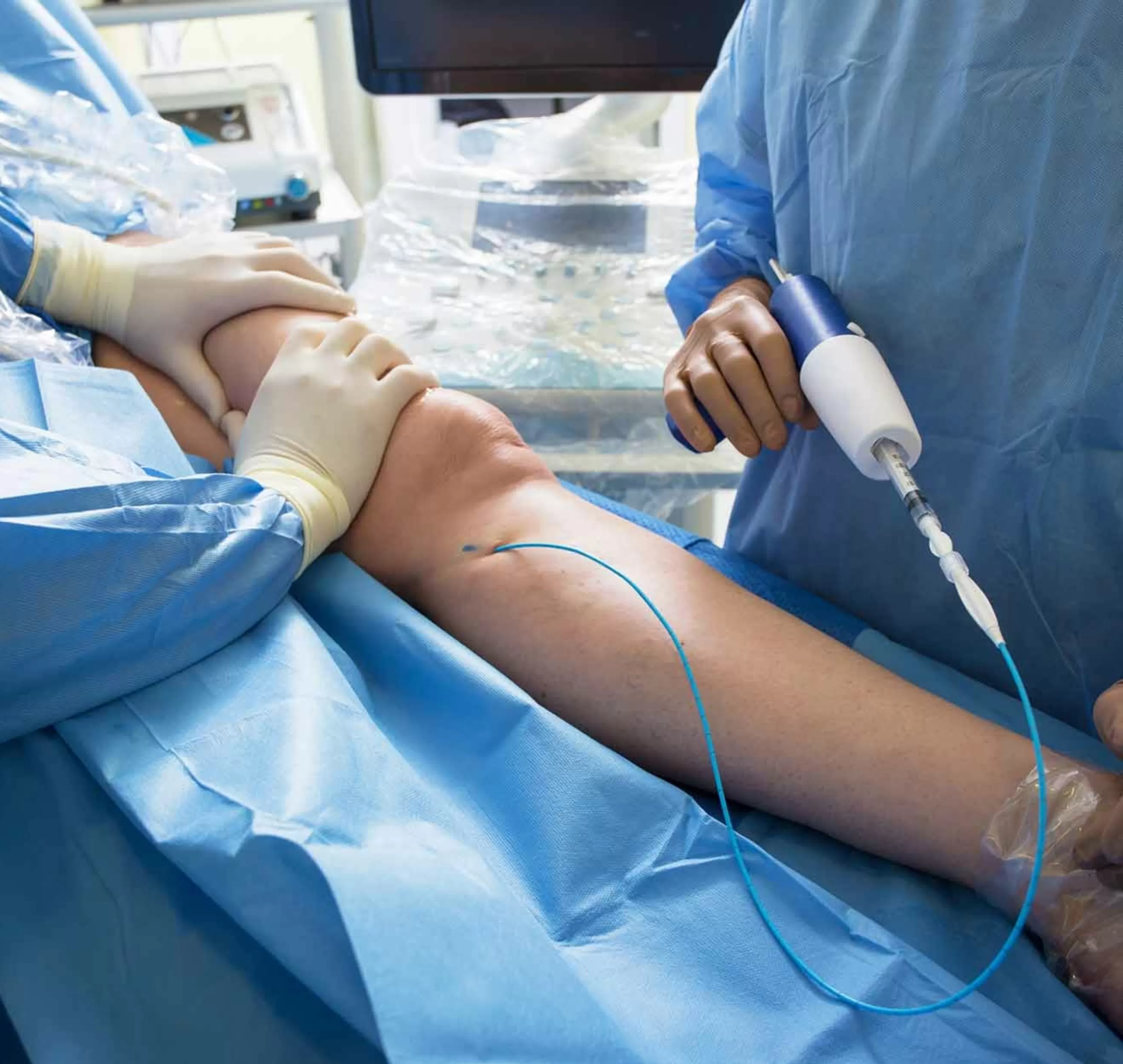Medical Glue Treatment
Medical Glue Treatment
Treatment
Overview
Overview
Glue treatment is one of the newest and most innovative, nonthermal treatment for vein disease and varicose veins. Medical grade superglue is used to seal off the saphenous vein, which is the most common cause of varicose veins. This treatment is minimally invasive and boasts excellent success rates compared to other treatment options, with most patients describing only minimal discomfort. Unlike most other varicose vein treatments, it has a unique advantage in that the majority of patients do not have to wear a compression stocking after the treatment. Since inception of Canberra Vein Care, Dr Melanie Sung has been at the forefront of the use of minimally invasive means of vein treatment in ACT and find it an excellent adjunct technique in certain cases.
How it works
How it works
Glue ablation procedure involves the placement of a very small amount of a specially formulated medical super glue (cyanoacrylate), commonly known as VenaSeal, into the diseased vein through a small catheter. Once the affected vein is sealed or closed, blood is immediately re-routed through other healthy veins in the leg. Unlike other treatments, VenaSeal does not require a regional nerve block or large volumes of anaesthesia. Furthermore, there are no pre-procedures drugs involved and patients can return to their normal activities right after the treatment. Unlike heat-based procedures such as endovenous laser or radiofrequency ablation, with VenaSeal there is no risk of skin burns or nerve damage. VenaSeal does not require any immediate post-treatment pain medication or uncomfortable compression stockings.
Why we use VenaSeal?
Why we use VenaSeal?
- Minimal anaesthetic. Unlike other treatment options, VenaSeal does not require a large amount of anaesthetic to complete. The procedure is performed with only a tiny amount of local anaesthetic, with no need for any sedation or general anaesthetic. Heat based treatments, such as laser, require a much larger volume of local anaesthetic solution to safely perform, which patients often find the most uncomfortable part of these treatment types.
- Minimal disruption to lifestyle and work commitments. Patients have described the VenaSeal treatment as having minimal discomfort, being able to return straight to work.
- Most patients do not have to use a compression stocking afterwards, unlike the other saphenous vein treatment options. Compression stockings are often the most disliked part of varicose vein treatment aftercare, which many patients finding them hot, uncomfortable, difficult to apply and remove, and aesthetically unappealing.
Expected Results
Expected Results
Most people are able to make a quick recovery after VenaSeal. Since there’s no need for anaesthesia, multiple injections or pain medication, patients are able to resume their life right away with only a tiny incision and bandage over the treatment site. However, avoid strenuous exercise such as weightlifting, running or jumping for one week.
Within a few months, the body will reabsorb the treated veins, causing it to disappear altogether. Most patients see considerable reduction in the appearance of their varicose veins within four-six weeks, with only one session.
While VenaSeal is 98.9% effective at alleviating varicose veins and associated symptoms, there’s a small chance the condition may return after the procedure. Patients are advised to stay active and exercise regularly, to maintain a healthy weight and avoid standing or sitting for extended periods of time to prevent recurrence of the disease.
- Treatment Time – 45 / 60 Minutes (Approx)
- Discomfort – Mild
- Recovery – No downtime
- Compression – Not required unless sclerotherapy also performed (see “Sclerotherapy”)
Preparation & Aftercare
Preparation
Preparation
- You will have an ultrasound imaging exam of the leg being treated. This exam is important for assessing the diseased superficial vein and planning the procedure.
- Stop taking oral iron supplements or any supplement containing iron two weeks prior to your treatment, as it can help minimize post treatment pigmentation
- If you have excess hair, then we ask that you shave the treatment area around 4 days prior to your procedure. Avoid shaving your leg immediate before your treatment.
During procedure
During procedure
- You may feel some minor pain or stinging with a needle stick to numb the site where the doctor will access your vein.
- Once the area is numb, your doctor will insert the catheter into your leg. You may feel some pressure from the placement of the catheter.
- The catheter will be placed in specific areas along the diseased vein to deliver small amounts of the medical adhesive. You may feel a mild sensation of pulling. An ultrasound will be used during the procedure to guide and position the catheter.
- The process of injecting the glue and applying gentle pressure above the site is repeated every 3cm down the full length of the vein to be treated.
Aftercare
Aftercare
- Compression stocking are usually not required after the procedure.
- You will be directed to go for an immediate 10-minute walk before you drive home. As long as you are able to walk unaided without restriction, you are allowed to drive home.
- Maintain normal daytime activities but avoid standing still or sitting for long periods of time. Walking for 15-30 minute daily for the next two week is advised.
- You will be asked to avoid long haul flights (>4 hours of continuous travel) for at least 3-4 weeks after the treatment. If travel is unavoidable, then you will be protected from deep vein thrombosis with subcutaneous low molecular weight Heparin (Clexane) during your travel.
- You will return for a follow-up ultrasound scan 2 weeks following treatment, to ensure that the treated vein is occluded and to exclude the very small risk of deep vein thrombosis. Some patients may require follow-up treatment of residual varicosities by Ultrasound-Guided Foam Sclerotherapy (UGFS). This procedure is often performed 2-4 weeks after initial treatment.

Results
FAQ
Have further questions or want to learn more?
Am I suitable for the medical super glue treatment?
In order to determine your suitability for the VenaSeal treatment, you will need to have a consultation with Dr Melanie Sung at The R Clinic. Dr Melanie Sung is an experienced varicose vein doctor in Canberra, offering a full suite of treatment options for varicose vein.
This treatment technique is used for patients where the varicose veins are being fed by a large, relatively straight superficial vein (such as the great or small saphenous vein). The glue is used for the “feeding vein”. The varicose veins are then closed by sclerotherapy.
How effective is the VenaSeal treatment?
Studies conducted into the success rates of the VenaSeal treatment has shown an initial success rate of 94% to 98.9% six months after treatment. This treatment has been extensively studied in the US and Europe achieving great results for patients who have undergone the procedure, showing a low risk of complications with great medium-term results. As it is a relatively new treatment, long term results are yet to be published, but the success rates are at least as good as other options based on the currently available results.
How is the VenaSeal procedure different from thermal energy procedures?
The VenaSeal procedure uses an adhesive to close the superficial vein. This differs from thermal energy procedures that use heat to close the vein. This intense heat requires numbing medicine, which is injected through multiple needle sticks. The injections may cause pain and bruising after the procedure.
How long does each treatment take?
Glue ablation may take between 1-1.5 hours.
Depending on treatment or combination of treatments, some treatment combinations could be up to 2 hours. Allow extra time for procedure set up and preparation such as numbing (if being used) and aftercare like applying compression stocking post treatment.
How much does the VenaSeal cost?
As of May 2018, the VenaSeal treatment has been added to the Medicare Benefit Scheme. This means that the treatment is now more affordable than ever. Out of pocket costs vary according to how extensive a treatment is required (specifically if one or both saphenous veins in the leg need treatment) and whether one or both legs are to be treated.
What are some of the side effects following VenaSeal?
The following symptoms can be expected:
- Mild to moderate pain persists for 1-2 weeks along the glued vein. Post VenaSeal discomfort should be managed with a combination of light walking and rest (with leg elevation), anti-inflammatory medication such as Nurofen or Voltaren.
- Phlebitis or inflammation may occur along the inner thigh in line with the treated vein. This is again managed with anti-inflammatories and stockings.
- Paraesthesia (skin numbness) – has been reported in some studies and is thought to be a result of inflammation around the treated vein temporarily affecting surrounding nerves.
- There is also the possibility of deep vein thrombosis and pulmonary embolism, however these outcomes are extremely rare. Again, this is a risk with all vein treatments (and also untreated varicose veins!).
What are the disadvantages of the glue treatment?
- More expensive treatment method
- Not suitable for all veins
- Additional treatment to the branch vessels may be required
- High rate of phlebitis (20%), usually easily managed with stockings and anti-inflammatories
What happens to the VenaSeal procedure adhesive?
Only a very small amount of VenaSeal procedure adhesive is used to close the vein. Your body will naturally create scar tissue around the adhesive over time to keep the vessel permanently closed.
What is VenaSeal made of?
VenaSeal is a special type of medical grade adhesive known as cyanoacrylate. It is specially formulated in medical labs and has been used in many other types of medical procedures since the 1950s such as dental, orthopaedic and plastic surgery. Some of the properties of the VenaSeal glue that make it ideal for sealing veins include:
- When the VenaSeal glue comes into contact with the blood within the vein wall, it rapidly seals the vein with minimal movement, so it does not spread into adjacent healthy blood vessels.
- It is very soft and elastic after it sets, meaning that once it has been applied, patients are not able to detect it under the skin.
- It has been shown to be extremely safe, and is non-toxic, anti-bacterial and has very low allergenicity.
